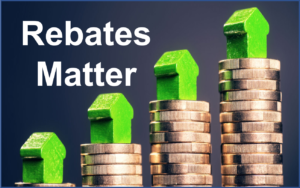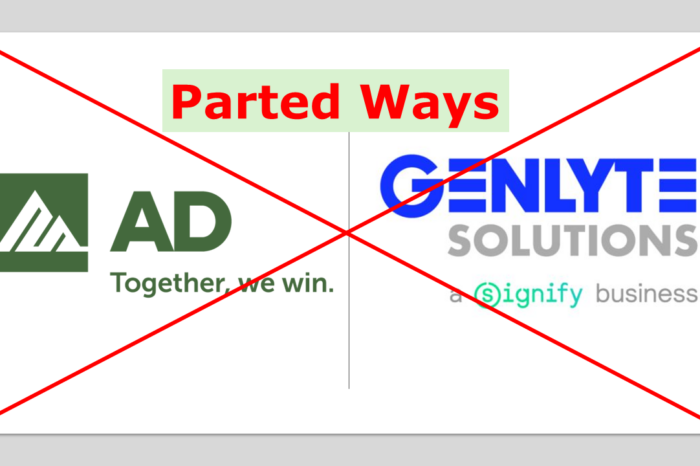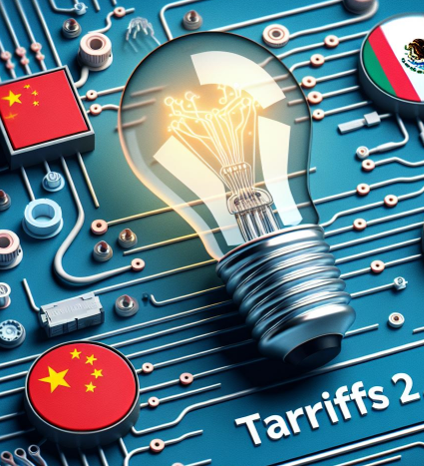Rebates, SPAs, Reset
 Everyone wants growth and loyalty. While companies strive to achieve this with quality products, service, and people (relationships), frequently the role of incentives to drive growth and/or engender loyalty come into play.
Everyone wants growth and loyalty. While companies strive to achieve this with quality products, service, and people (relationships), frequently the role of incentives to drive growth and/or engender loyalty come into play.
I’ve been involved in the incentive industry since 1984! For many years it was focused on non-cash (merchandise and travel programs). When I was with IMARK, it was rebates and hence cash based. Nowadays, it’s both.
In the electrical distribution industry, rebates represent 20-60% (typically) of a distributor’s net income … and the 20% range was during Covid. In a slow market economy where margins get squeezed, rebate income becomes a higher percent of distributor net profit. I predict that when the next NAED PAR report comes out it will be 35-40% (double a few years ago.)
We’ve researched the State of Volume Rebates for Enable the past few years (and can send you the reports if you are interested or go to the Enable site.) Consolidation is playing a role in changing these programs, and channel strategies, for many manufacturers (and we’re helping some in restructuring these programs). Double dipping (at a minimum) for larger independents is no longer the exception. (and here’s some articles I’ve written on Rebates – Rebates … The Gift that Gives, The Importance of Rebates in the Electrical Channel, Distributors, Which Drug (I meant Rebates) are You On? (and there are more if you do a Search using the Search box.)
While the concept of rebates was developed as a growth tool, and it still can be, for many it is a necessity (manufacturer) and expectation (distributor) and many in the company understand what they are but are ambivalent in helping their company achieve goals to earn incremental profitability. This is where there are growth opportunities or, as Enable phrases it, “a reset”. In reality the issue is “is there a commitment, an intentionality, to achieve the goal, or is the goal “aspirational” if the parties execute?” There is lots of debate on this because it requires a 4-letter word … that starts with a “w”.
Recently John Gunderson, formerly of Crescent, HD Supply, White Cap and other distribution and profit enhancing organizations, attended Enable’s Catalyze Conference where he shared thoughts, and to some, some wisdom, on rebates and SPAs. He shares his observations from the conference.
 “Rebates, Backsides, and Special Pricing Agreements (SPAs) continue to grow in importance every year for the Channel.
“Rebates, Backsides, and Special Pricing Agreements (SPAs) continue to grow in importance every year for the Channel.
At the Enable Catalyze Conference earlier this month – I was asked to present a channel focused session. I was excited about presenting, because this is the only industry event that I know of where you spend two days with B2B Distribution leaders just focusing on – Rebates and Special Pricing Agreements.
FYI – Enable is partnered with many buying groups, including AD (public information) and many North American Distributors. The Catalyze event theme was about the need for a “reset” to reflect, strategize and transform when it comes to using rebates, and improving the ways rebates are used. For me personally, it was a perfect opportunity to talk to as many channel leaders as I could, as Enable had over 300 attendees at this year’s Catalyze conference.
I had 3 big questions in mind to ask and get feedback on from manufacturers and distributors.
1. Are Rebate programs between the Manufacturer and Supplier still one of the top drivers in total profitability for the channel?
I went in knowing that Manufacturer rebate and incentive programs deliver between 10% and 100% of total net profit dollars to distributors in many B2B Distribution channels. The answer to the question of “are rebates still vitally important” was…. Yes!
There was some variance on the answers though as distributors and buying groups resoundingly replied with an emphatic “YES”. The Manufacturers in the room were more a lower case “yes”.
Some of the manufacturers were not always sure they get the return they wish from their rebate programs. I personally believe rebates drive more than just loyalty and partnership for manufacturers. If manufacturers view their returns as more a “gift” or “tax” on the business, then they may not be capitalizing effectively on their programs. It was very interesting to hear directly from many manufacturers on “rebates’, and in some cases those programs were viewed more as “a cost of doing business”.
I can say from my direct experience working for many of North Americas largest distributors in a Category Management role, that the more open and honest manufacturer answers I got at the event are not always shared at the negotiating table with distributors.
After two days though it was still clear that Rebate programs today are still vitally important to Channel Profitability especially for the distributor. It is very clear that the “backside” incentives from Manufacturers are crucial to every B2B channel partner at the event.
2. Do Rebates really deliver the returns manufacturers expect? What I heard was more a mixed bag of positive results.
I think often many manufacturers overlook the positive effect of rebates on market level pricing. This is possibly the largest benefit of Rebates for manufacturers and distributors. Rebates help keep market level pricing higher with end user customers. Most manufacturers would tell you that when they give a 2% first cost reduction to a distributor, that they often find it becomes a pass thru 2% discount in sell price in the market to win orders.
With rebates, whatever level you are at with your distributors less of that “rebate discount” is passed through to the end customer and this keeps end customer market level pricing higher. That is a win for both the manufacturer and the distributor in the channel. Many of the manufacturers I spoke with were more focused on the rebate payout dollars and were potentially overlooking the market level pricing benefits.
It is clear that a good rebate program will drive more focus on your line from your distributors that help grow sales above market.
3. Are SPA programs Growing or Declining?
This one was an interesting question that I got a lot of direct feedback on. I got a wide range of answers from many in the channel, and I got about an equal number of answers in each category to – 1. About the same number of SPAs, 2. We are increasing SPAs or trying to increase them, or 3. We are trying to reduce the overall number of SPAs to manage.
Special Pricing Agreements are what I call a “Blerse”. Sometimes SPAs can be a “Blessing” and other times they can be a “Curse”. What is difficult to manage is whether a SPA is a blessing or curse can vary by market, and by individual customer.
When you have a great SPA system in place the “Blessings” are evident:
- It locks in a competitive price at the SKU level by customer or customer type.
- It creates a barrier to entry for the competition as they may not be able to sell the same SKU at the level you are selling the SKU for a specific customer.
- It makes pricing easier by reducing end customer negotiation. The end customer is not as likely to ask for an additional discount on a price that you have already negotiated.
- It is more “guaranteed business”. If you have a SPA tied to a customer for a specific line that is negotiated that business is highly likely to stay with you.
When SPAs are viewed as being in the “Curse” Category-
- If your end customer has a SPA with a key supplier at the other distributor or a competitive supplier and you don’t have a similar SPA level it is hard to move that business. A customer SPA that is not tied to your business, can be a large barrier to entry with an end customer.
- SPAs are very hard to manage in terms of time, effort, and resources for both manufacturers and distributors. There is benefit to the complexity of SPAs, but the claim and administrative process is often immense to manage that process.
- If you are not as proficient managing your SPAs as the competition (Number of SPAs, customers on SPAs, competitive SPA price levels, etc.) your team may feel they are at a competitive disadvantage.
One thing was clear at the event from every conversation I had was that SPAs for better or for worse they are here to stay. In my opinion those manufacturers and distributors who maximize their SPA programs are going to win more often at the expense of those competitors who do not maximize their SPAs
What are your opinions on the future of “Rebate and SPA Programs” for B2B Distribution?
As always, I appreciate your feedback, please feel free to reach me with your thoughts.”
Takeaways
- Rebates are important, if you work them.
- Rebates can be a growth driver for both parties (revenue for manufacturers, profit for distributors) if there is commitment.
- Depending upon the distributor’s culture, rebates can be a profit enhancer by mitigating price discounting.
- As John says, SPAs can be a Blerse. It comes down to your administrative process (and we’ve done research on this for manufacturers so can attest to this, and I’ve heard the pain from some, but it has gotten better over 10 years but has a way to go) and not allowing salespeople to override a SPA (why override a contracted price?)
- Based upon John’s input, the opportunity to network about rebates and SPAs, is a unique opportunity as it would be taboo for manufacturers, or distributors, to discuss in an industry setting, however, learning best practices from other industries is a great idea. Enable’s Catalyze can be this venue for category management / purchasing personnel.
If you want info on prior State of Volume Rebate reports, feel free to reach out to me.






















